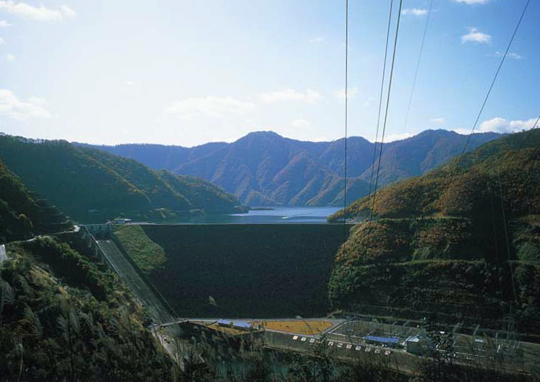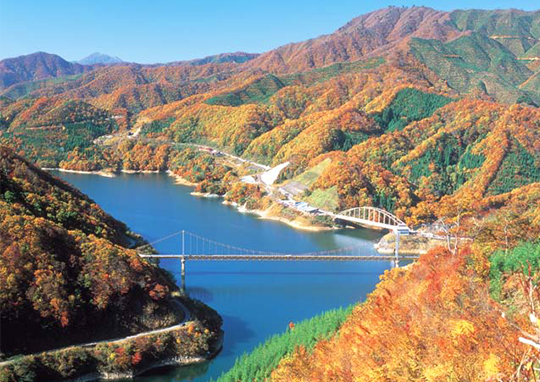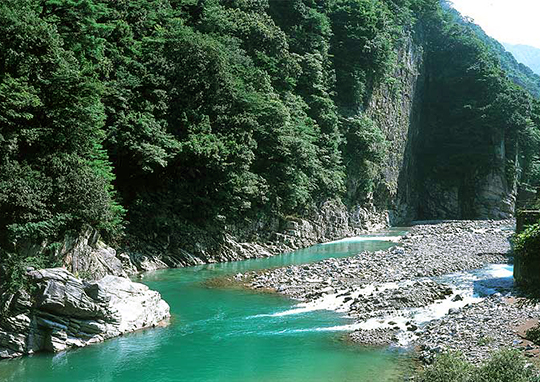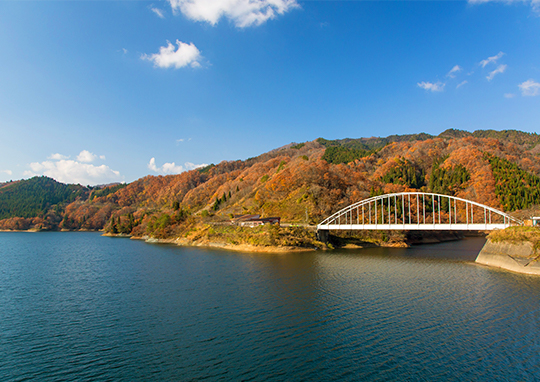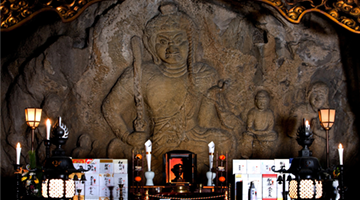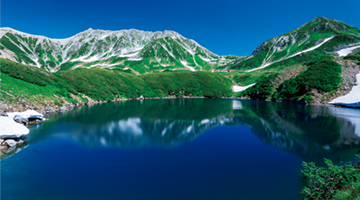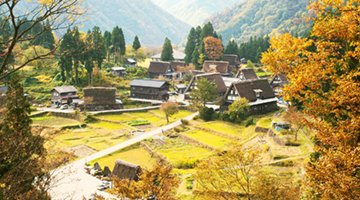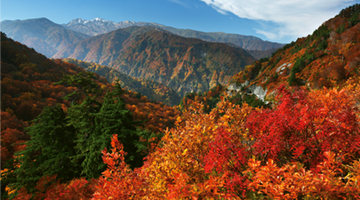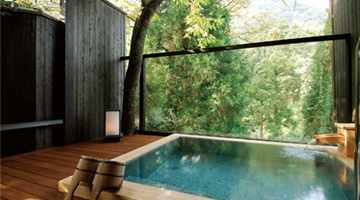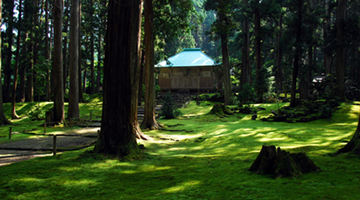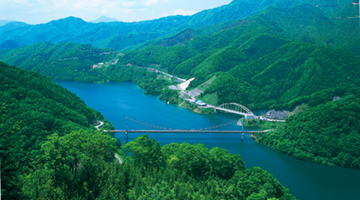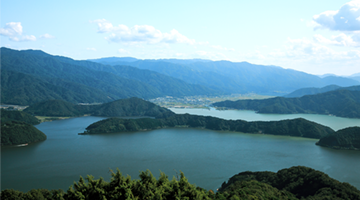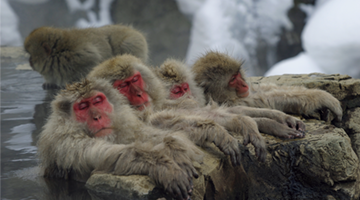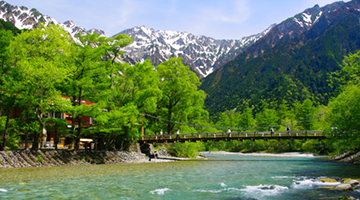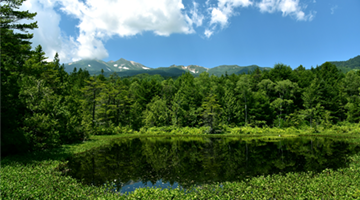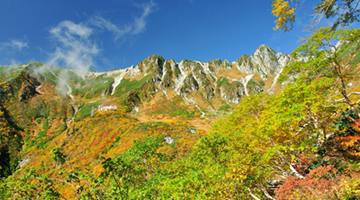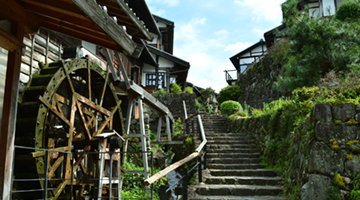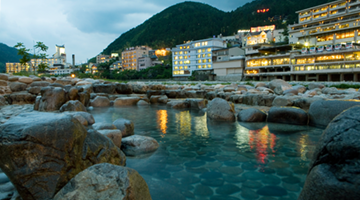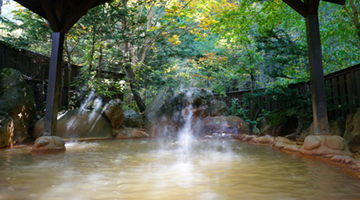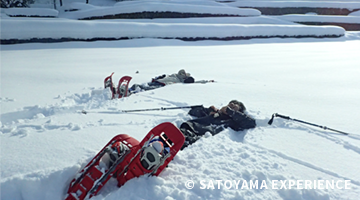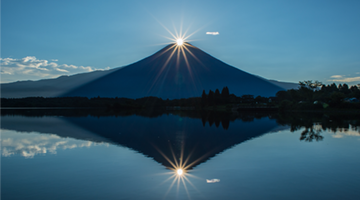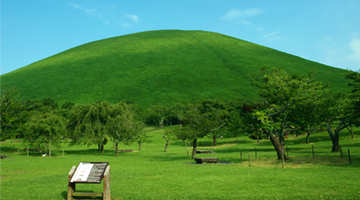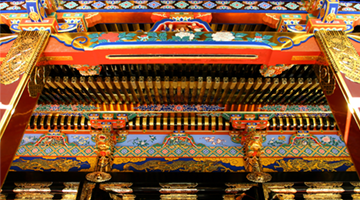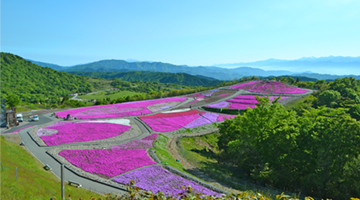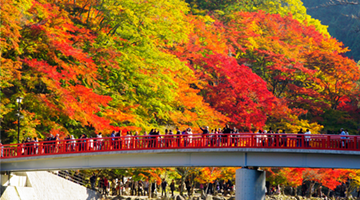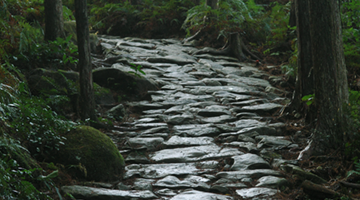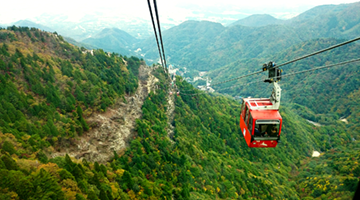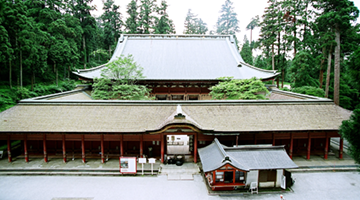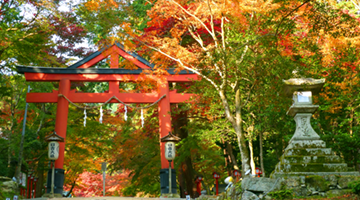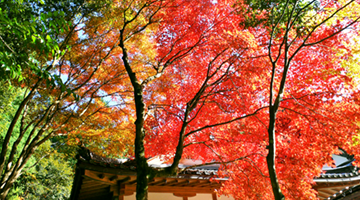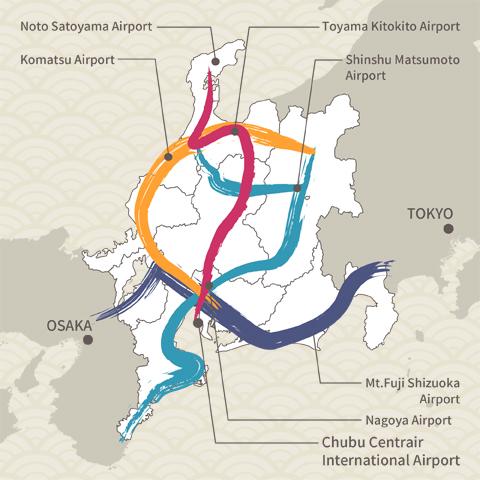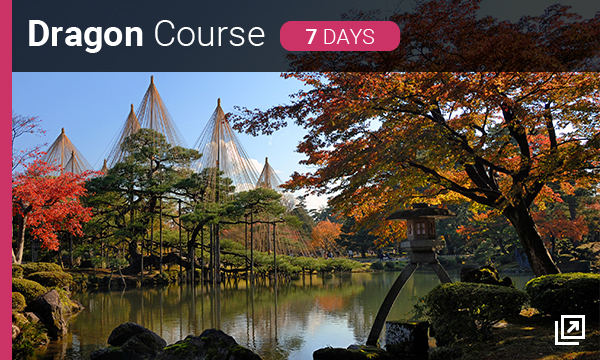A magnificent scenic spot where the lake surface reflects the autumn foliage.
Lake Kuzuryu is named for a dragon called Kuzuryu that has nine heads. The lake was given the name because it is located in the watershed of the Kuzuryu River, which flows through the town of Ono in Fukui Prefecture. A reservoir that was created by the Kuzuryu Dam, which was built across the Kuzuryu River in 1968, Lake Kuzuryu holds an enormous amount of water.
Throughout the four seasons, the surface of this mountain lake, nestled amid the glories of nature, reflects the colors of the mixed forest around it with eye-popping beauty. In mid-October, the colors of the trees become richer with each passing day, and the calm surface of the lake is imbued with the gold, orange, and red of autumn. Because of the great difference in temperature between day and night, the autumn foliage is strikingly vivid. The Hakogase Bridge, 266 meters long, spans Lake Kuzuryu so elegantly that it is popularly known as the Bridge of Dreams. The bridge was built as a prototype for the Great Seto Bridge that links the islands of Honshu and Shikoku. It seems to melt into the surrounding foliage as it quietly accepts the lake’s embrace.
The myth of the dragon Kuzuryu, born from a mountain stream.
The name Kuzuryu is used for the river, the lake, and the dam, but there are any number of theories about the origin of the name. One such story, handed down for generations, is that in the latter half of the 9th century, an incarnation of Hakusan appeared before the assembled monks of Heisenji, and when a statue of the incarnation was set afloat on the river, a dragon with nine heads appeared, accepted the statue as an offering, and carried it downriver, ultimately arriving on the shore opposite the Kurotatsu Shrine. According to legend, the river was thereafter called the Kuzuryu River.
Another version of the origin tale is that, in the mid-10th century, four shrines were established in the four corners of the country to defend its territory. The shrine in the northern corner was the Kurotatsu Shrine, and because the deity enshrined there was a black dragon (kurotatsu), the river that flowed in front of the shrine was called the Kurotatsu River. With the passage of time, the river became known as the Kuzuryu River. Still another theory is that, because the river flows through steep terrain and the area in its upper reaches gets heavy rainfall, causing the river to repeatedly overflow its banks, it has been known since ancient times as the Kuzure (mudslide) River. The name gradually evolved into the Kuzuryu River. And yet Lake Kuzuryu, born from the flow of this river, now exhibits a calm surface.















